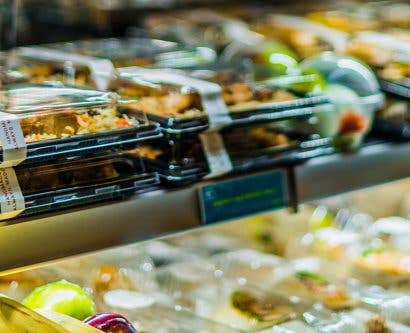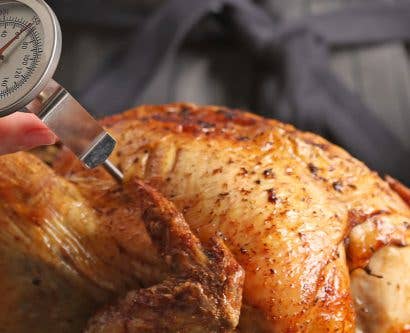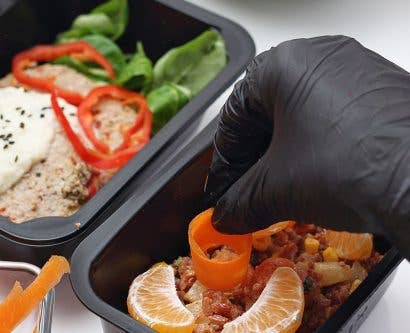Food Preservation Methods and Guidance
We’re spoiled for choice when it comes to food preservation. To extend the longevity of food used at home or in your food business, you can use refrigeration, freezing, canning, sugaring, salting, and even vacuum packing. Plus, food experts are constantly researching new preservation methods to expand our options.
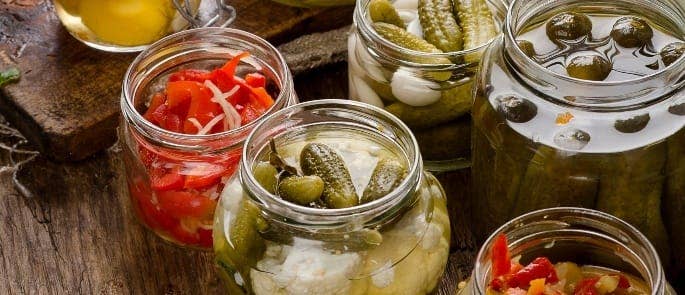
Centuries of trial and error have taught us the safest methods of food preservation, which you must prioritise if you want to retain the quality and hygiene of stored food. The good news is that, with the right guidance and materials, you can easily do so in any setting.
The Importance of Food Preservation
Food preservation refers to the processes you use to prepare food for safe, long-term storage, whether you plan to use it at home, for prep in a commercial kitchen, or to sell directly to consumers. Preservation methods help inhibit bacterial growth and other types of spoilage, meaning the food is safe and satisfying to eat in the future.
There are three reasons why food preservation is important:
- To minimise pathogenic bacteria – food in long-term storage is at serious risk of spoilage due to bacteria such as E. coli, Salmonella, and other pathogens. Bacteria only need warmth, moisture, and time to rapidly multiply in food, but food preservation inhibits one or more of these conditions and stops their growth. For more information, check out our Complete List of Food Borne Diseases.
- To keep food at its best quality – food deteriorates over time due to spoilage. In many cases, mild spoilage doesn’t make food unsafe to eat, but it significantly affects its taste, texture, and appearance. Proper food preservation can help retain some of these qualities, as well as the nutritional value of certain foods.
- To save money – waste is costly, both at home and in a commercial setting. Ideally, you should avoid buying more than you can use, but various preservation methods – if done safely – help you keep vegetables, fruits, meat, etc. well past their usual expiration so there’s no need to bin them.
Certain food preservation methods can be tricky, but chances are you’ll gain a real sense of satisfaction and pride when you successfully apply them. Also, as many preservation methods require precision and care to maintain food safety, you’ll strengthen your awareness of food hygiene risks and good practices.
Need a Course?
Our Food Hygiene Training is designed to ensure a comprehensive knowledge of all food safety and hygiene procedures.
Common Methods of Food Preservation
Food preservation methods range from the simple process of chilling to more complex procedures such as canning. Many are creative options that help you mix things up at home or sell food in various forms of packaging. Others help you keep your inventory in a commercial kitchen for much longer, which means you reduce waste and increase profit.
The 6 sections below look at various food preservation methods you can use and the safest, most effective way to do them.
Chilling
Although refrigeration is a basic storage method nowadays, it was once a luxury. Storing food at a low temperature is the simplest, and often safest, way to store many types of food, as the food you plan to chill usually requires minimal preparation – or it’s already done for you.
Fridges preserve the quality and safety of food because the cold slows bacterial growth and minimises spoilage. Depending on the type of food, it can last between a few days and a few weeks in the fridge before the texture and taste deteriorate.
To safely refrigerate food, you should:
- Set your fridge to a temperature between 1°C and 4°C. The law requires you to store food for commercial use under 8°C.
- Use separate refrigerators, where possible, for raw and high risk or ready-to-eat food to minimise cross-contamination. If it’s unpractical for you to use separate fridges, you should be aware of which fridge shelves you should store food on. For example, ready-to-eat food should sit above raw food at all times.
- Ensure you label food with best before and use by dates if you remove the original packaging.
- Avoid overloading the fridge or placing food in front of the cooling unit. Ensure there’s plenty of room between foods to allow air circulation.
- Put canned food in a separate container before you refrigerate it. When you refrigerate an open can, a small amount of metal transfers to the food which, although not harmful to consumption, gives food an unappetising taste.
- Use a FIFO food storage system to ensure you use those with the nearest best before or use by dates before others. Proper stock rotation minimises waste and saves you money.
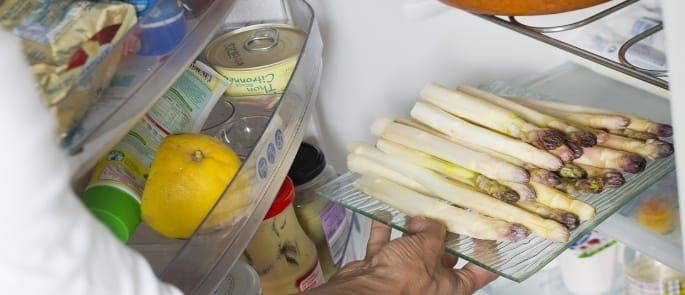
Did you know?
Throughout history, various civilisations cut and stored ice or snow to create conditions for refrigeration. Ice was even shipped around the world.
Freezing
If stored properly, frozen food can last for months. In fact, because bacteria cannot grow when frozen, food you keep in the freezer can remain safe to eat for almost indefinite periods of time. However, it will eventually deteriorate in quality and become unappetising, so you should use most frozen food within a few months or a year.
To safely freeze food, you should:
- Set the freezer to a temperature between -18°C and -22°C.
- Place food in air-tight containers or freezer bags before freezing. Proper wrapping is especially important for meat, otherwise it may get freezer burn and become inedible.
- Only freeze items before their best before or use by date.
- Never refreeze defrosted food, as it gives bacteria an opportunity to grow between thawing. You should either use it right away or store it in the fridge for up to 24 hours.
- Defrost the freezer regularly to keep it free of an ice build-up. You should be able to keep frozen food in the fridge for a couple of hours maximum while the freezer defrosts.
- Label food with the date you freeze it. You can refer back to the date to see whether you should use the food before it deteriorates. Use our online guide to check how long food lasts in the freezer.
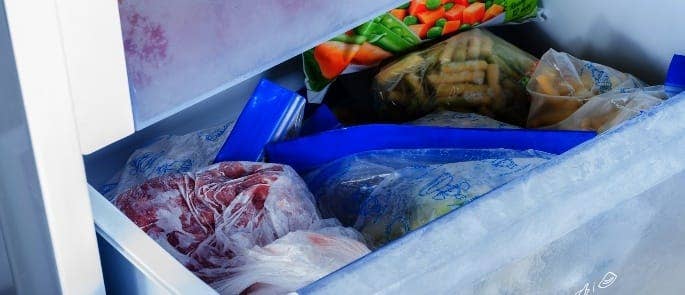
Did you know?
If the power cuts, don’t open the freezer door. Food usually remains frozen for about 24 hours even if the freezer shuts off, so you shouldn’t have to throw anything away once the power returns.
Sugaring
Preserving food in a high-sugar environment stops bacterial growth by reducing the food’s water content. It works particularly well for fruit: you can make jam and marmalade that lasts for a long time, and you can use canning to store it (see the section below).
All sorts of sugary substances work well to preserve food, including sugar granules, sugar syrup, or honey. Some sugaring recipes even use alcohol alongside sugar to preserve certain foods.
You may use sugaring to preserve foods such as:
- Fruit – apples, peaches, plums, apricots, cherries, and more preserve well when sugared.
- Vegetables – ginger and carrot are commonly sugared and used for relishes or condiments.
- Certain fish and meat – you can combine sugar with salt or another liquid to make a brine that helps preserve meat and reduce saltiness.
Using an excessive amount of sugar comes with health risks, but if you reduce the amount of sugar to lower than what is necessary, you may allow the food to spoil. Make sure you follow suitable sugaring recipes shared online or in books to get the right amount, and be sure to consume sugared foods in moderation.
Did you know?
The average person consumes 24 kilos of sugar a year: six times the recommended amount.
Salting
Similar to sugaring, salt draws water out of food and stops bacterial growth. In high concentrations, it can even destroy bacteria cells, although by this point the food is likely unappetising.
There are two forms of salting:
- Dry curing – you apply salt to the food, such as meat, and leave it to draw out the water.
- Wet curing – better known as brine, you mix salt with water and add food to the liquid to preserve it, usually together with canning (see the canning section of this guide).
As with sugar, excessive salt consumption can harm health, so you should follow suitable salting recipes found online or in published food preservation books. You also need to use salt specifically designed for pickling or a Kosher salt.
Did you know?
The Ancient Romans valued salt so highly as an ingredient for preserving food that they used it as a form of currency.
Canning
Keeping food canned significantly extends its lifespan – but only if done correctly. The canning process preserves food by removing oxygen through an airtight seal and containing food in an acidic, sugary, or salty environment, where bacteria cannot thrive.
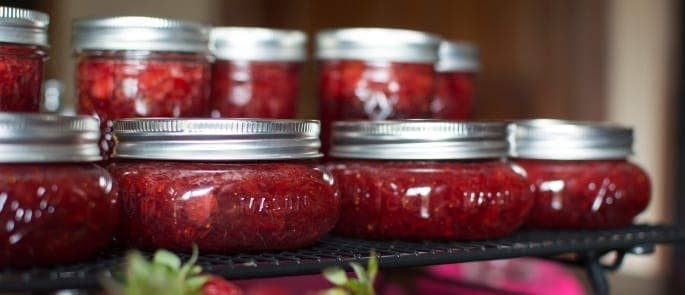
You should follow a safe, proper canning process:
- Select good quality food that is still within its best before or use by date. Handle it hygienically.
- Purchase suitable jars and self-sealing lids specifically designed for canning. You cannot reuse old peanut butter jars and jam pots; they won’t ensure an airtight seal.
- Purchase a canning rack.
- Follow tested preservation recipes. You must follow every step carefully to make sure your canned foods preserve safely. Visit freshpreserving.com for good examples or search for books online.
Follow these canning steps:
- Heat the jars beforehand in simmering water (not boiling).
- Prepare the food according to the preservation recipe. You usually need to heat food to boiling.
- Remove jars from the water and loosely fill them with the food.
- Depending on the recipe, you may fill the jar entirely with the food (e.g. jam) or you may need to add an acidic liquid or brine, which you’ll boil beforehand.
- Leave ½ inch of headspace and apply the sealing lid. Adjust the lid until the fit is fingertip tight.
- Submerge the jars in boiling water using your canning rack for the period of time that the recipe states.
- Remove and set aside to cool for as long as stated.
It’s critical that you follow a tested canning process to increase the longevity and safety of food. If improperly canned, food containing C. botulinum may produce toxins that cause botulism poisoning: a rare but life-threatening condition. Fortunately, C. botulinum remains inactive in high-acid environments, so make sure you follow any steps that require adding acids.
Did you know?
In response to Napoleon’s concern for soldiers dying from malnutrition, a man named Nicholas Appert invented canning in the early 1800s.
Vacuum Packing
Similar to canning, vacuum packing deprives bacteria of oxygen by creating an airtight atmosphere. While food may not last for as long as canned goods, vacuuming still extends its storage life for much longer than keeping food in the fridge or in a cupboard.
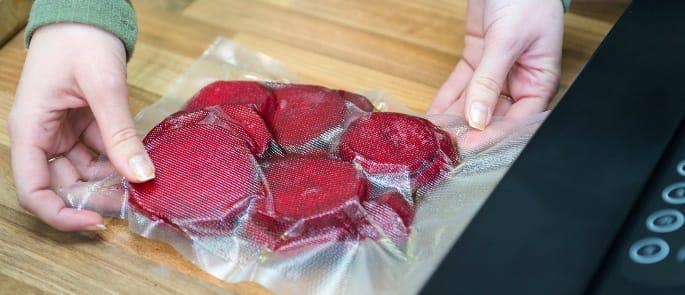
Vacuum packing also has value as a preservation method because it preserves the quality without the need for other ingredients (unlike canning). It usually maintains the food’s smell, colour, taste, and texture – which is particularly desirable for meat you intend to cook rare. In the absence of air, vacuum packed food also retains its moisture, which ensures optimum food quality.
Beyond preservation, vacuum packing also works well for food preparation. Many chefs vacuum pack specific ingredients and cook it at a precise temperature to produce unique results.
To safely vacuum pack food, you should:
- Prepare the food hygienically. Wash fruits and vegetables and trim unwanted skin, fat, and bone from meat.
- Place the food inside a suitable vacuum packing plastic bag.
- Feed the plastic bag into a vacuum packing machine.
- Allow the vacuum packing machine to run.
- Store in the fridge or a cool, dry place.
You can follow certain methods that don’t require a machine to vacuum pack food if you like, but they usually sacrifice food safety and produce varying results. Remember: to prevent botulism, airtight packaging must be spot on. In a commercial setting, always use suitable equipment to vacuum pack. You’ll preserve food safely and make it safe to eat at a later date.
Did you know?
You can vacuum seal a lot of foods, but you should avoid soft cheese, mushrooms, broccoli, cabbage, and Brussels sprouts. They give off gases that expand the bag and lead to spoilage.
What to Read Next:
- What’s the Best Way to Store Vegetables?
- How Long Does Food Last in the Freezer?
- Food Safety Awareness Quiz
- Do You Know Which Fridge Shelves You Should Store Your Food On?
- Level 3 Supervising Food Safety in Catering









